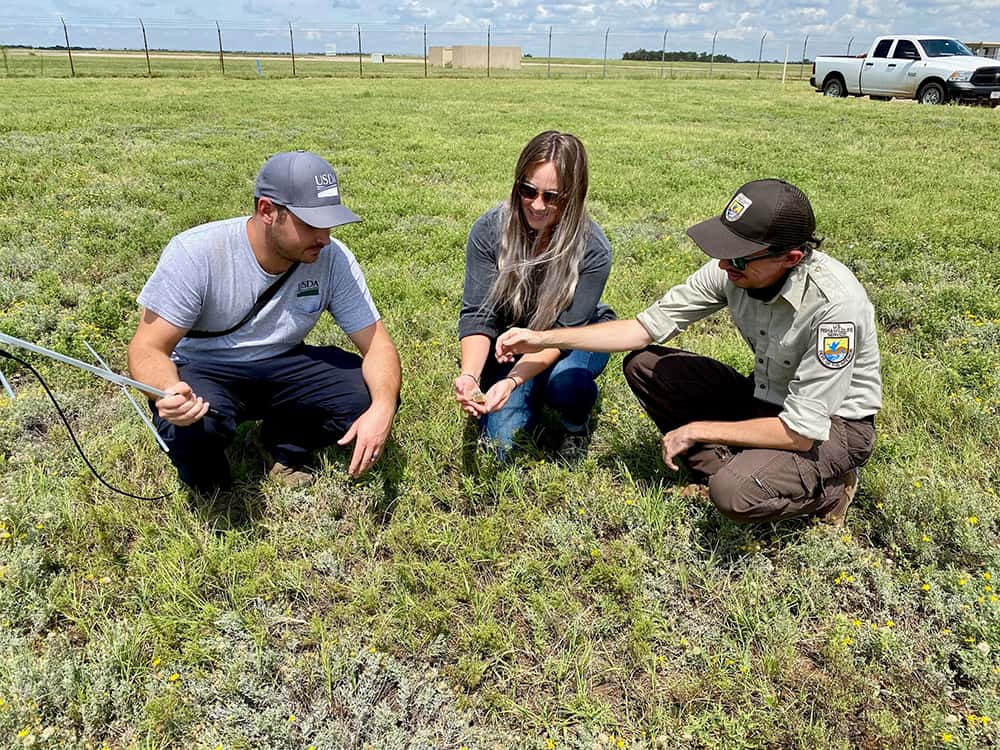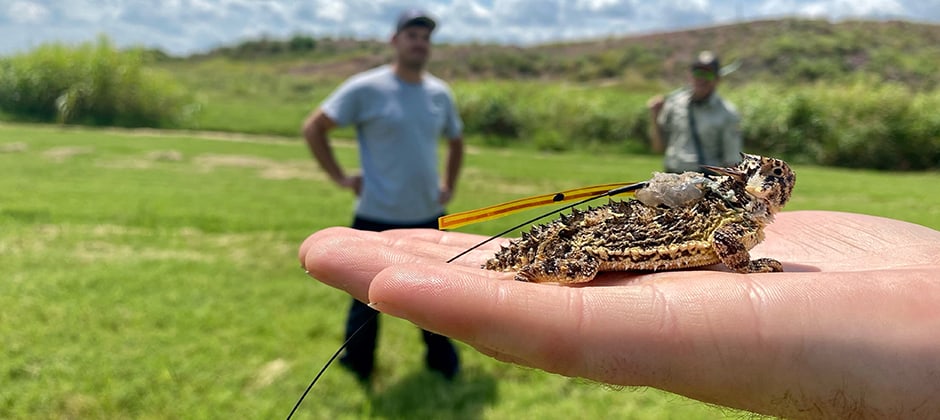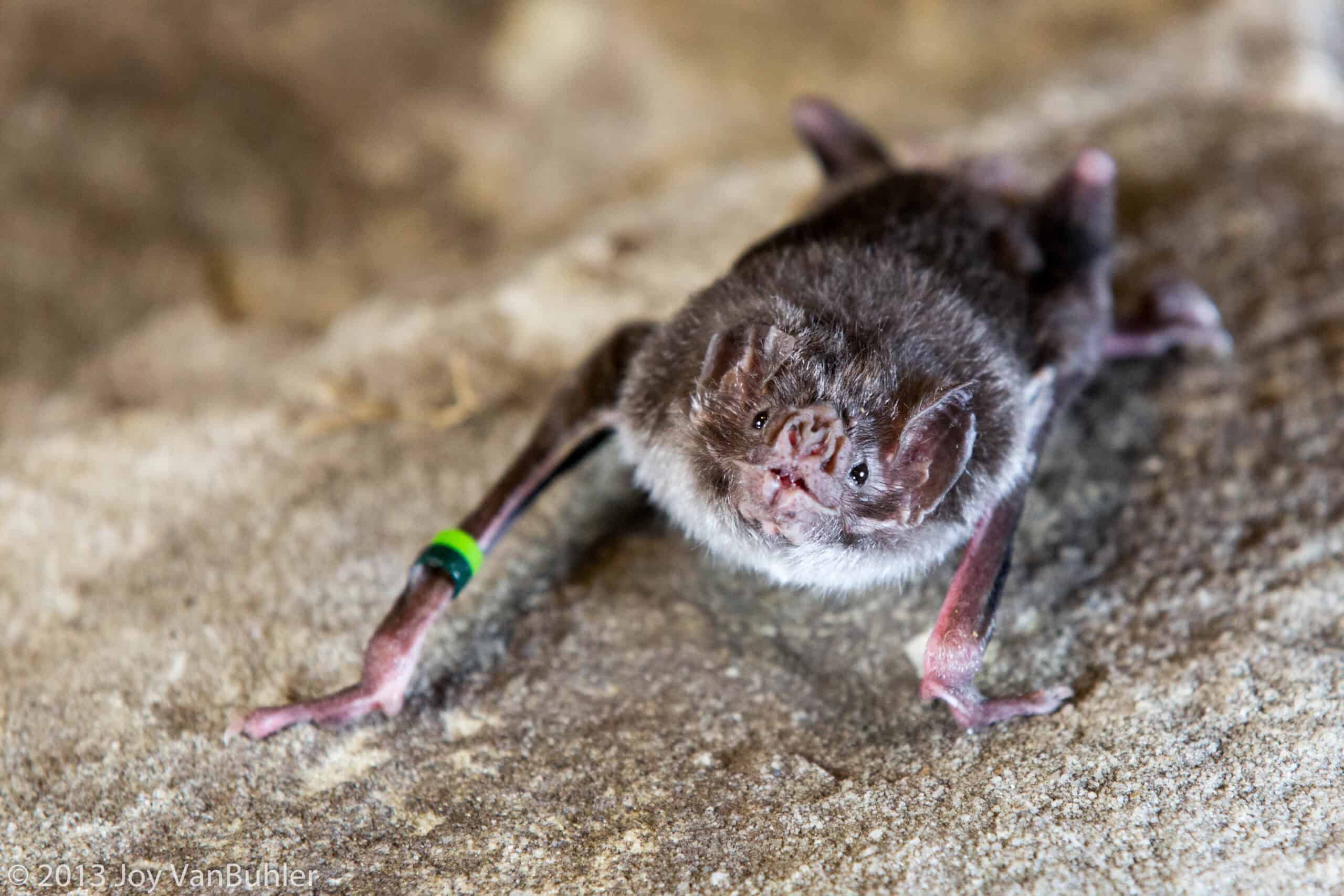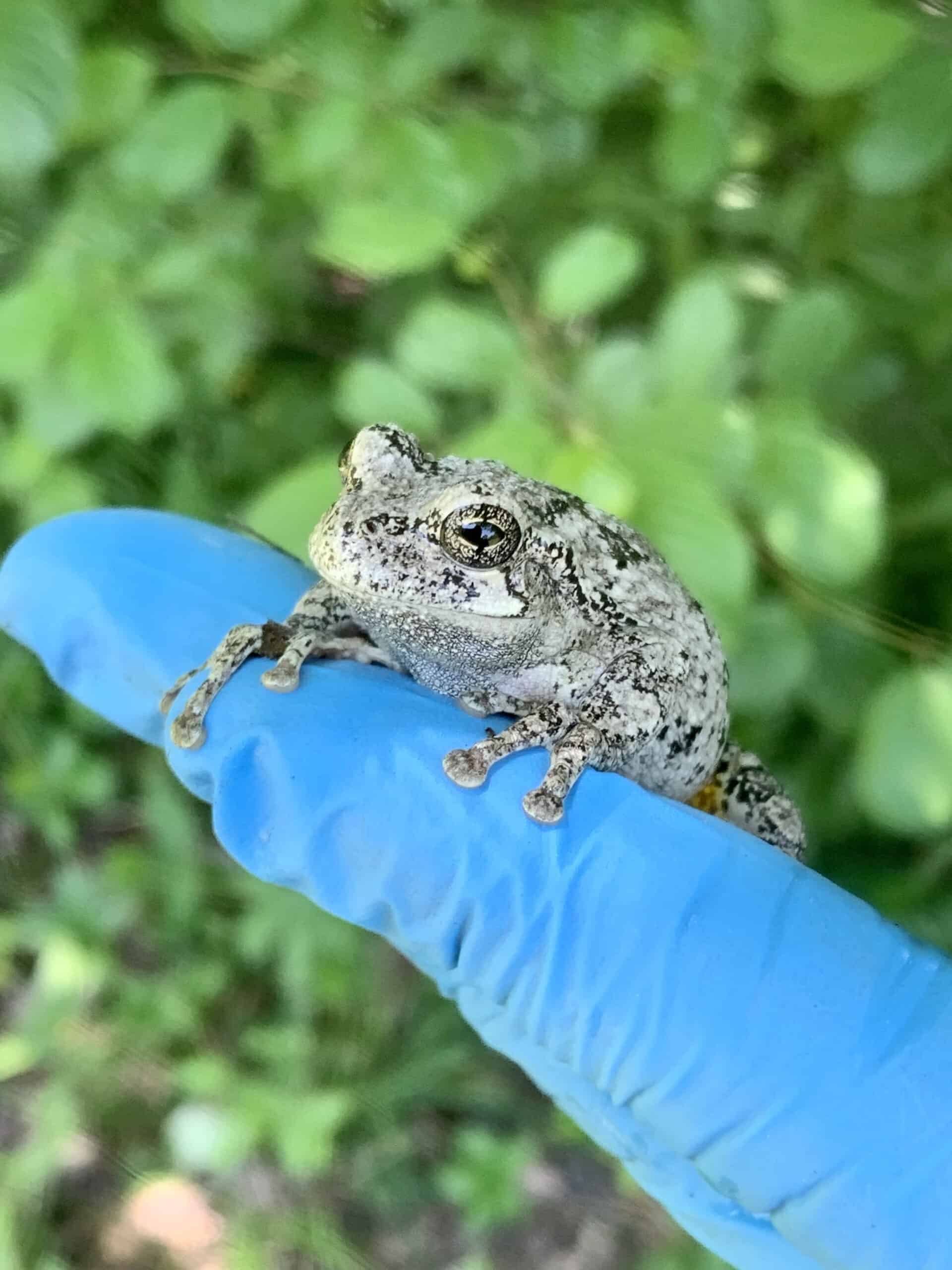Share this article
Why are Texas horned lizards on the decline?
The “horny toad” bears a striking resemblance to a dinosaur, albeit a tiny dinosaur. No more than 8 inches long, the Texas horned lizard (Phrynosoma cornutum), as it’s formally known, was once common on the Texas and Oklahoma landscape. Declining populations, however, have made it a species of great conservation need in Oklahoma.
That status prompted studies across Oklahoma to find the causes of decline and to supply guidance toward management strategies supporting long-term population viability. In 2021, the Altus Air Force Base Natural Resources Program began a collaborative project with the U.S. Fish and Wildlife Service to study aspects of Texas horned lizard ecology at the base.

USDA Wildlife Specialist Matthew Bosworth, Altus Air Force Base Natural Resources/Water Quality Programs Manager Kelly Niland and USFWS biologist Wade Gurley track lizard on the base. Credit: Adam Kohler/Wildlife Services
Wildlife Services Oklahoma personnel were already providing aircraft-wildlife hazard support at Altus. They teamed up with the researchers to assist in data collection, gathering baseline data on Texas horned lizards throughout the airbase. Together, they hope to find range, relative abundance and local microhabitat requirements of the lizard.
Wildlife Services Oklahoma is involved in all data gathering. The agency is taking part in physical surveys of the base, mark/recapture efforts using PIT tag transponders, deploying radio transmitters to track movements and studying vegetation, microclimate and individual horned lizard physiology. With its base access privileges, Wildlife Services has been able to help USFWS personnel by escorting them onto the airfield, dramatically increasing the study area.
The study data can help supply insights into the ecology of the lizards, how they use landscapes, why their populations may be declining and what factors could help them increase.
Since Texas horned lizard success may be tied to invertebrates or microhabitats on the airfield, Wildlife Services supports imperiled species, the future of land stewardship and wildlife conservation while achieving the mission of mitigating wildlife strikes through habitat management.
Header Image: A researcher displays a Texas horned lizard fitted with a PIT tag. Credit: Adam Kohler/Wildlife Services








